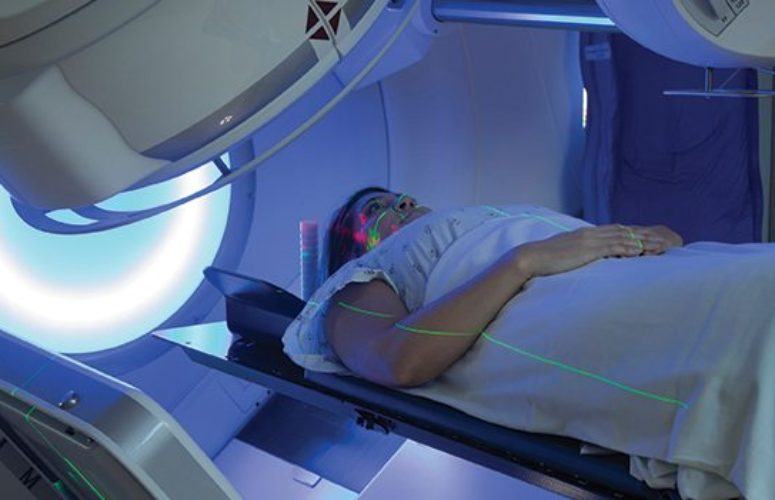
NJ Hospital Association Partners For Patients
Celebrating the 5th Anniversary of NJHA’s success under the Partnership for Patients quality improvement initiative: Data confirms improvements and associated healthcare cost savings.
By Ilene Dorf Manahan, Contributing Writer On Mar 29, 2017There’s healthy news for New Jersey hospital patients: Between 2010 and 2016, a statewide initiative to improve the quality of hospital care has succeeded in preventing more than 77,000 complications for patients at a cost savings of over $640 million, while also generally improving healthcare delivery around the state.
These achievements have resulted largely through a program called Partnership for Patients, developed by the US Centers for Medicare and Medicaid Services (CMS) to improve the quality and safety of healthcare delivery and reduce the cost of healthcare in the United States, consistent with the objectives of the Affordable Care Act. The Partnership connects state, regional, national and hospital system organizations across the country to help identify successful strategies to reduce hospital-acquired conditions and their related costs.
In New Jersey, the New Jersey Hospital Association (NJHA) was selected as one of the first Hospital Engagement Networks (HEN) to participate in the Partnership. Since establishing the Partnership for Patients-New Jersey in 2011, impressive improvements have been made in reducing the incidence of so-called hospital-acquired conditions, or HACs, and in cost savings. For example, reductions of 55 percent have been experienced in adverse drug events, 50 percent in venous thromboembolisms (blood clots), 49 percent in early elective deliveries, 46 percent in central line-associated bloodstream infections, 45 percent in catheter-associated urinary tract infections (UTIs), and 43 percent in injuries from falls and immobility. Improvements of 38 percent have resulted in the incidence of pressure ulcers, 34 percent in obstetric adverse events and 30 percent in incidence of hospital readmissions within 30 days.
The NJHA just completed its fifth successful year in the Partnership for Patients program and has been recognized for helping New Jersey achieve the second-best rate of reducing hospital readmissions in the nation from 2012 to 2016. Today, the NJHA leads one of only 16 Hospital Improvement Innovation Networks (HIIN) from around the country selected by CMS to continue its innovative initiatives and collaborations. Partners in the NJHIIN – hospitals, health systems, nursing homes, physicians, nurses, patients and their caregivers, and consumer groups, among others – conduct studies, collect data on an ongoing basis, methodically implement new strategies, chronicle and share results of those efforts, and hold intensive training and communication programs to help maximize hospital performance and healthcare outcomes while also reducing costs.
The Partnership for Patients is just that: a partnership. At NJHA, the effort is led by two experienced nurses who coordinate quality improvement efforts among its diverse list of participants. But the most important individual in the initiative is the patient.
“Healthcare consumers have the right to expect high quality healthcare,” says Aline M. Holmes, DNP, RN, senior vice president of clinical affairs at NJHA. “One way to obtain that is to be an active member of the healthcare team. Patients who talk with their doctors tend to be happier with their care and have better medical results. Ask questions at your next medical appointment. Take the time to learn what kind of screening tests a person your age needs. If you or a loved one has received a diagnosis, learn about the condition and make sure to ask questions about treatment options.”
Family members and other “healthcare advocates” also play an essential role in supporting an ill loved one, adds Shannon Davila, RN, director of the NJHA Institute for Quality and Patient Safety. “The success of our partnership depends heavily on the involvement of the patient and their family and friends. Going to a doctor or hospital can be a very stressful situation – or the patient might not be physically or mentally able to follow and understand everything that’s going on or that the doctor says. They should have someone go with them to take notes and ask questions. Upon discharge, ongoing advocacy and follow-up on the patient’s behalf continues to be essential,” Davila asserts.
Better Outcomes Through Team-Based Learning
To achieve its objectives, Partnership for Patients-New Jersey has established learning collaboratives for each HAC. These teams are comprised of healthcare professionals in the respective specialty area who are accountable for the programs that are implemented – and the results. To develop their strategies, they draw on both medical data and empirical evidence, promote open communication and out-of-the-box thinking between all partners, including patients and their caregivers. To ensure project understanding and enable timely changes to increase chances of a project’s successful implementation, they conduct face-to-face meetings, educational seminars, conference calls webinars that can be viewed by staff no matter what their shift or availability to attend seminars in person, patient and family meetings, and provide printed support materials. The teams build upon previous successful strategies, simultaneously acknowledging what didn’t work, and drawing on data and studies that support and reinforce best practices and reflect successful outcomes from other institutions.
Holmes reports that this comprehensive approach toward improving efficiency combined with quality improvement efforts has created safer care processes and environments, improved patient care and follow-up, enhanced patient safety and care outcomes, and has improved patients’ experience of care, engagement and satisfaction, while also reducing readmissions and lowering the overall cost of care.
Much of the NJHIIN attention has centered on issues related to HACs caused by invasive device-related infections. “Many such devices are used with critically ill patients who have needed them, but because they’re critically ill, there can be higher rates of infection,” Davila says. “Over the past five years, the Partnership for Patients program has been in place, and through our multidisciplinary approach, we have collected data that indicates invasive devices should be removed when no longer necessary, which inherently reduces the risk and incidence of infection. We also have facilitated communication among staff and developed new strategies for using invasive devices that have proved effective while also reducing infections.”
For one, the Centers for Disease Control and Prevention has recommended that hospitals regularly reassess the use of invasive central lines to the bloodstream, catheters to the urinary tract and ventilators. As a result of NJHIIN data and collaborations, doctors and nurses that insert central lines are wearing surgical gowns and masks, as they would in the operating room, to help lower the prospect of central line-associated bloodstream infections that can result from inserting a catheter in the arm, groin, neck or chest to deliver medication, which typically is done at bedside. Additionally, a cart with needed supplies is set near the bed, so the healthcare provider doesn’t have to stop the procedure and leave the sterilized bedside. “Policies don’t get fully changed immediately,” Holmes notes. “Instead, we trial and evaluate procedures one step at a time so staff gets used to implementing them and we can collect feedback.”
Catheter-associated urinary tract infections (UTIs) also have been significantly reduced in New Jersey through the introduction of new procedures. While the use of catheters is often necessary, patients, especially the elderly, can get UTIs from germs that enter the bladder either when the catheter is being inserted or while it remains in the bladder. No matter how sterile the environment, medical staff recognize that one of the best ways to avoid catheter-associated UTIs is to use urinary catheters only when necessary and remove them as soon as possible. Nevertheless, family members sometimes request the use of catheters because their loved one is incontinent or is uncomfortable using a bed pan. “By explaining to family and caregivers the risks of using a catheter and why we want to remove it as soon as possible, if one has been inserted, and keeping them involved in the plan of care, they become more understanding and accepting and more actively engaged in the overall healthcare process,” Davila reports.
“Family members or close friends are invaluable advocates for their loved one, so their participation in the healthcare process is a common thread in all the HAC areas – including providing input to improve patient safety and quality of care,” Davila states. “It’s not just with infection prevention that we count on the family’s input, but involvement in all areas of their hospital experience.”
Improvements of over a third in the prevention of pressure ulcers have been made through partnering with the patient’s caregivers. “Family members understandably don’t want their loved one to be uncomfortable, so they may be hesitant to move or turn them,” Davila notes. “But if we don’t move them, they run the risk of developing pressure ulcers. Again, once family members understand this, they become better partners in helping to manage their loved one’s care.”
In other cases, families think the ill patient should be sedated when on a ventilator and just sleep for days on end. For patients who require the breathing support of a ventilator, healthcare providers should explain the importance of reducing the patient’s sedation level, or giving them a “sedation break.” Davila explains, “By reducing sedation and mobilizing the patient, healthcare teams can improve overall health and reduce risks to other harms, like pressure ulcers and blood clots. Too much sedation also can affect their breathing and mental alertness. Even if they still require some use of a ventilator, it’s better for them to be as mobile as they can be. Once we explain the risks associated with their loved one not moving, they support our approach.”
Protecting Patients Through Early Intervention
Sepsis has become another major issue for both medical attention and education within the hospital setting and with families, Davila reports. Sepsis typically starts as a mild infection, perhaps a UTI or pneumonia. But left untreated, it can quickly worsen and spread to the blood stream, then affect vital organs and the body begins to shut down. Historically, few patients were screened for this condition, but staff both in the patient care units and in emergency departments have been trained to actively monitor patients for symptoms of sepsis – including trouble breathing, a fever and changes in heart rate and blood pressure – and immediately implement a multi-pronged approach of taking blood for analysis and culture, administering antibiotics, if appropriate, and giving the patient plenty of fluids. “When staff saw data on morbidity improvements that resulted from the increased and timely detection and treatment of sepsis, they became totally engaged in the process,” Holmes reports. The sepsis mortality rate has been reduced by 16 percent since 2011. “The data confirmed for them that their attention and fast response was significantly improving patient care.” Davila adds that if a caregiver notices symptoms that could indicate sepsis, they should immediately contact their healthcare provider. “Caught early enough, sepsis can be treated and managed.”
Significant attention also continues on reducing the risk and rate of C. Difficile (C. Diff), which generally results from the overuse of antibiotics for infections like UTIs and pneumonia. The overuse winds up killing protective bacteria in the gastrointestinal tract, in addition to the “bad” bacteria causing the infection, and can lead to C. Diff infection. “Families need to be aware of the balance that must be maintained,” Davila emphasizes. “Some well-meaning people believe that by giving the patient an antibiotic, even one that may be unnecessary, that they’re helping to make them better, when they actually could be causing them harm.” The incidence of C. Diff has been reduced by 18 percent since 2013.
Another HAC that has generated revised thinking by obstetricians based on medical literature is early elective deliveries. “Historically, a baby was considered full-term at 37 weeks, so parents who, for example, wanted to have their delivery coincide with the availability of grandparents to attend the birth or help out at home – would schedule the delivery a week or two early,” Holmes explains. “However, American Academy of Pediatrics studies and data have revealed that even those two weeks can make a difference in the development and health of a newborn, as their brain increases in size in the last few weeks of pregnancy. That’s an important consideration when you think about the ‘stress’ the baby goes through after birth just learning to breathe on its own.” Consequently, according to medical journal studies, early deliveries have resulted in a higher-than-normal incidence of babies having to return to the NICU (neonatal intensive care unit) and in learning disabilities.
“Obstetricians obviously don’t want to do anything that would harm the newborn, so they now are doing far fewer deliveries before 39 weeks and they are counseling their patients against them,” Holmes notes.
Similarly, based on data reflecting increased infections or other negative outcomes, physicians have cut down on the number of elective cesarean section deliveries, significantly reducing the number of HACs resulting from obstetric adverse events.
Since 2011, adverse drug events have been reduced by more than half. One of the main targets of this effort has been the use of Warfarin, an anti-clotting drug widely used by healthcare providers to prevent patients from getting blood clots that could travel to key organs and prove fatal. If use of the drug is not monitored, especially after a patient leaves the hospital, too much of an anti-clotting drug could result in internal bleeding and serious complications. “This is one issue where both patient and family education on the danger of over-medicating is essential,” Holmes emphasizes.
A relatively new issue on the Partnership’s menu is ERAS, Enhanced Recovery After Surgery. NJHIIN members are studying, developing and discussing potential new approaches to patient recovery after major surgeries, to minimize surgical site infections.
Electronic Medical Records Provide Key Data
Electronic medical records have helped NJHIIN teams responsible and accountable for specific HACs at each hospital to more efficiently and speedily improve a process or approach. “A key quality improvement strategy we employ is ‘rapid cycle improvement processes,’” Holmes explains. “It involves identifying, implementing and measuring the success of a potential procedural change in order to improve a process or approach. By combining the electronic medical records with the rapid cycle improvement strategy, teams can collect data, analyze and share results, implement alternative approaches, and quickly measure results to speed interventions and determine what responses and treatments appear most effective in treating the specific HAC. This approach is very methodical, so it becomes very clear – very quickly – what is and isn’t making a difference.
“Further, making the data and information available electronically makes it possible for everyone to provide input and for all team members to understand why certain procedures are being implemented,” Holmes says. “Everyone is willing to share – and they’re not competing with each other. Instead, we are helping each other provide the healthcare quality and safety we all want for our patients.”
Through 2019, NJHA and its NJHIIN partners will work to achieve the national goals of a further 20 percent decrease in overall patient harm and a 12 percent reduction in 30-day hospital readmissions from the 2014 baseline. Improving care for Medicare beneficiaries, increasing patient and family engagement in care, and reducing healthcare costs are central to the program’s HIIN initiative.
“Our work isn’t done,” Davila concludes. “Over the next several years, new evidence-based strategies and interventions will be implemented as a result of studies and communication ongoing today.”
Protecting Kids from Unnecessary Tests
One of the latest efforts of Partnership for Patients-New Jersey is an initiative to reassess how hospitals treat minor head trauma in children. The goal is to reduce unnecessary use of scans that could expose kids to radiation.
At all 10 of the children’s hospitals in New Jersey – and many other general hospitals – physicians are reassessing how they evaluate and treat minor head trauma. “With all the publicity on football-related concussions, CT scans had increased in use with children, even if they hadn’t lost consciousness,” reports NJHA’s Aline M. Holmes, DNP, RN. “The problem is that the brain cells of children under the age of 17 are still developing and administering too much radiation can be harmful. Instead, new protocols encourage closely monitoring youngsters who suffer minor head traumas over a 24- to 48-hour period instead of immediately taking a CT scan. This change and the primary reason for it has been shared with athletic trainers and coaches, as well as with parents.”
Be Active in Your Healthcare
The Partnership for Patients-New Jersey encourages patients to be involved in their healthcare. What’s the best thing you can do as an engaged patient?
RN Shannon Davila says that perhaps the easiest and most basic intervention to reducing infections is regular handwashing and the use of alcohol-based hand sanitizers. She reminds patients and their advocates that “they are empowered” to ask doctors and nurses tending to them whether they’ve washed their hands. She also urges anyone caring for the elderly or small children or who is a healthcare worker to get their flu shot, to eat right and to get plenty of sleep. “To take care of your loved one, you have to take care of yourself first.”
Related Articles:






